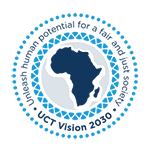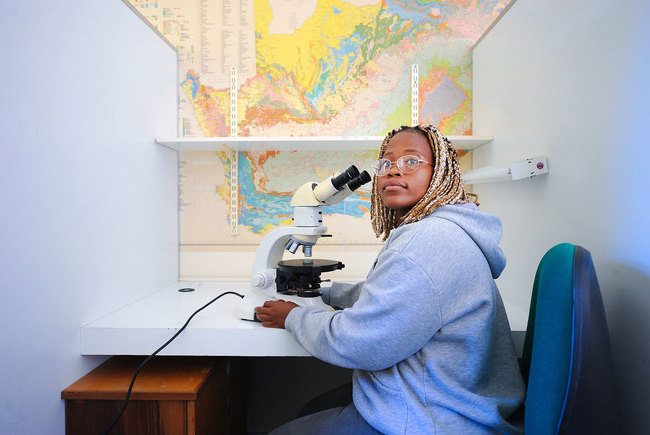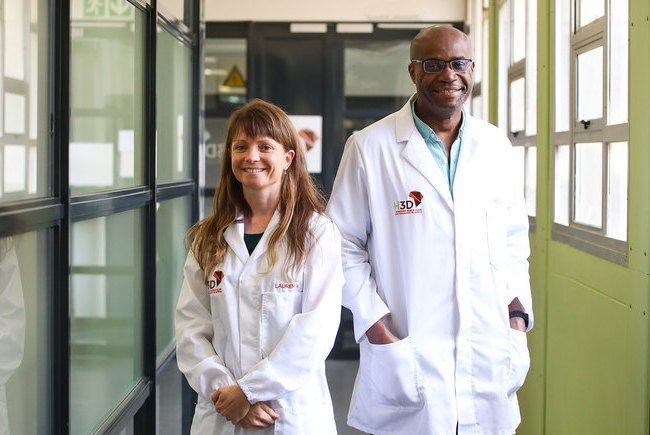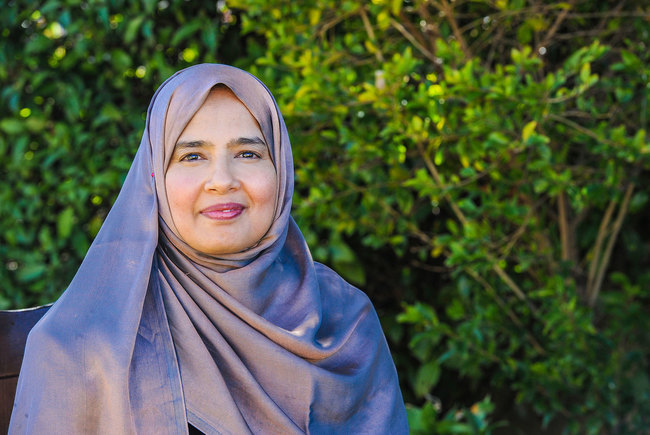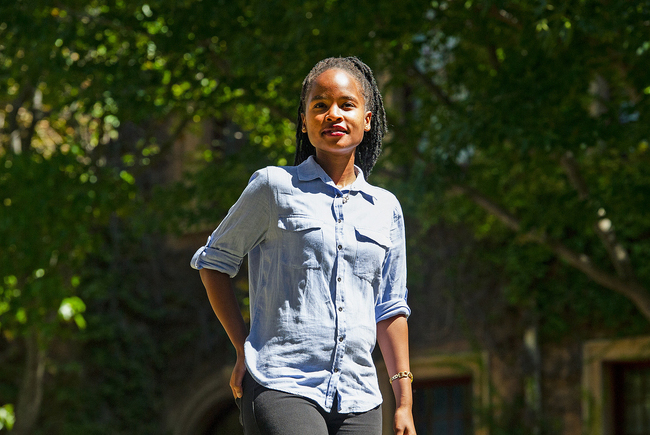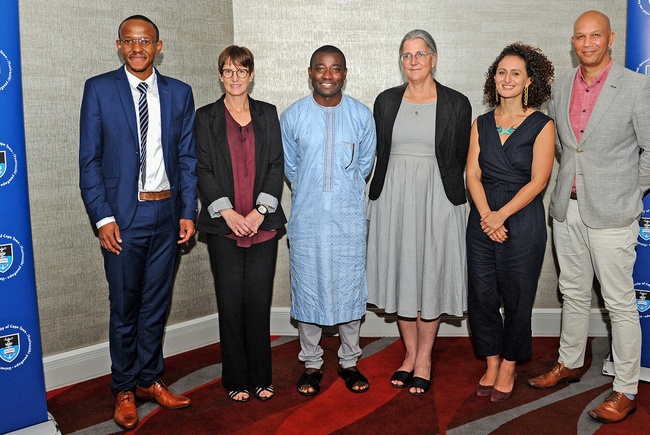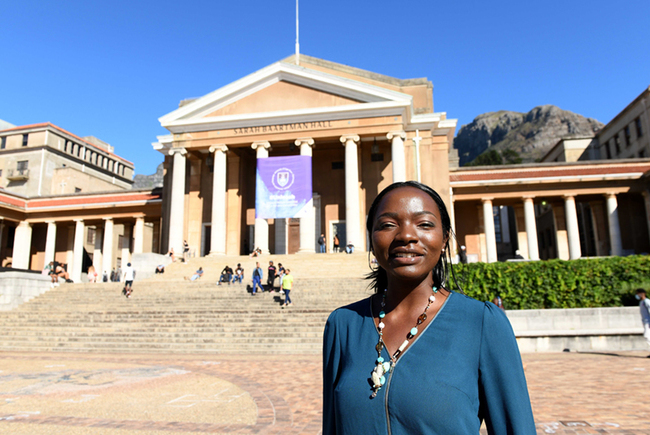Design thinking and interdisciplinary research key to addressing global challenges
19 October 2022 | Story Niémah Davids. Photo Lerato Maduna. Read time 5 min.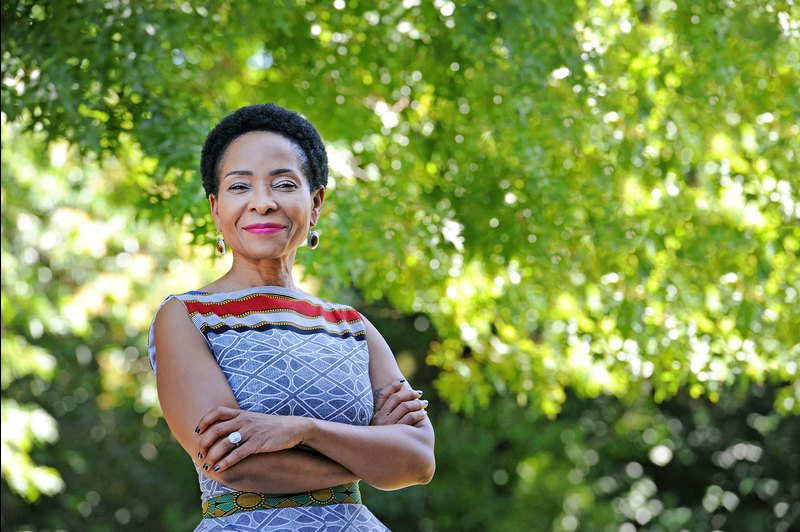
The use of interdisciplinary research approaches is imperative for design thinking. It provides problem-solvers with the platform to understand challenges from various perspectives and highlight factors that contribute to those challenges to aptly reshape and address them.
This was according to University of Cape Town (UCT) Vice-Chancellor Professor Mamokgethi Phakeng. She made these comments during a session at UCT’s Hasso Plattner School of Design Thinking (d-school) Afrika’s d.confestival – the first design-thinking conference hosted on the African continent. The three-day event kicked off on Wednesday, 12 October, in the new d-school Afrika purpose-built building on UCT’s middle campus. It was during an afternoon sitting on the final day of the conference that Professor Phakeng delivered a keynote address on the topic: “Design thinking and interdisciplinary approaches for sustainable solutions to global problems”.
“Design thinking [and] interdisciplinary [research approaches] both provide a similar landscape that disrupts the traditional, patriarchal patterns of academic and industrial knowledge. This landscape replaces the competitiveness of individual researchers with what Hasso Plattner says is ‘an essential cultural change’ that incorporates habits of cooperation, such as creative confidence, curiosity, collaboration and a trial-and-error attitude,” she said.
A valuable methodology
Addressing delegates, Phakeng stressed that design thinking is not just an exercise that requires discussing a particular problem. Instead, the concept focuses on developing actions and tangible solutions to observe, measure and address key challenges.
“Interdisciplinary approaches to problem-solving help us to cultivate that spirit of adventure in ourselves and in future generations.”
Phakeng said she is confident that the design-thinking methodology will help to expand the focus on science to incorporate not just knowledge, but also attitudes that guide the way knowledge is used. Like interdisciplinary research, she said the practice of design thinking is centred on teamwork and the concept also encourages empathy.
“Interdisciplinary approaches to problem-solving help us to cultivate that spirit of adventure in ourselves and in future generations. [It encourages the future generation] to be brave enough to lead with curiosity, as design thinking encourages,” she said.
Inviting diversity
When it comes to academia, interdisciplinary approaches are also particularly useful.
By working across disciplines, academics have the opportunity to collaborate, rediscover and use their curiosity, creativity, education and past experiences to their advantage. And by engaging mindfully with the process of curiosity, inviting diversity and aiming for action, she said academics will automatically move towards incorporating the design-thinking process in their ways of working to help them navigate and address some of the world’s most pressing challenges.
“The process of problem-solving becomes not just a task to be accomplished, it also helps us evolve new ways of approaching the problem and thinking about what we know and how we use that knowledge,” Phakeng said.
Because the underlining mission of design thinking is to make a difference in the world, academics should use the concept to prepare students to lead in a time of change and to instil in them the same kind of mindset that design thinking encourages, which includes curiosity, teamwork, an appreciation of diversity and a focus on leading change.
At the forefront of change
And UCT is leading this change. She said one way of cultivating interdisciplinary approaches is by introducing programmes of study that draw from different faculties and disciplines. UCT’s Faculty of Engineering & the Built Environment is already leading the way in this regard. The faculty requires that engineering students take elective courses in the Faculty of Humanities to broaden their capacity to cope with complex social questions that they may be exposed to in their professional practice. Similarly, she added that the university’s Department of Information Technology also offers a programme that trains students in faculties like Humanities and Commerce to use digital technology in their chosen fields of work.
“It is an excellent way to approach solutions to the problems we have created, and it is an excellent way to train new generations to avoid creating similar problems in the future.”
“Interdisciplinary research and teaching create a broad platform for experts and students to work together by learning together, being curious together, exploring together and sharing from their own experiences and specialist knowledge. It is an excellent way to approach solutions to the problems we have created, and it is an excellent way to train new generations to avoid creating similar problems in the future,” Phakeng said.
 This work is licensed under a Creative Commons Attribution-NoDerivatives 4.0 International License.
This work is licensed under a Creative Commons Attribution-NoDerivatives 4.0 International License.
Please view the republishing articles page for more information.
Highlights from 2022
As we look back on 2022, we celebrate some of the stories that were popular with readers of the UCT News website during the year.

The Hasso Plattner d-school Afrika at UCT hosted the prestigious d.confestival, the first design thinking event of its kind in Africa.
13 Jan 2023 - 4 min read Readers’ Choice 2022
UCT researchers were honoured for their research at the NRF awards, while others were added to the NRF’s list of A-rated scholars.
12 Jan 2023 - 9 min read Readers’ Choice 2022
UCT is one of the best places in the world for development studies, according to the subject rankings from Quacquarelli Symonds.
12 Jan 2023 - 2 min read Readers’ Choice 2022
UCT was ranked 237th in the world by the Quacquarelli Symonds university rankings.
11 Jan 2023 - 3 min read Readers’ Choice 2022
UCT’s Faculty of Science graduation walk of celebration.
11 Jan 2023 Readers’ Choice 2022
UCT’s Faculty of Humanities graduation walk of celebration.
11 Jan 2023 Readers’ Choice 2022
UCT was been ranked among the top 100 universities in five subject areas by ShanghaiRanking’s Global Ranking of Academic Subjects 2022.
09 Jan 2023 - 3 min read Readers’ Choice 2022
UCT doctoral student Mweete Debra Nglazi’s research showed that obesity in SA women of childbearing age is due to a lack of physical activity and increased consumption of unhealthy food.
09 Jan 2023 - 5 min read Readers’ Choice 2022
Master’s graduate Dr Joshua Fieggen was one of four UCT alumni to receive a 2023 Rhodes Scholarship.
09 Jan 2023 - 5 min read Readers’ Choice 2022
UCT researcher Dr Katherine Antel has received two international awards for work in HIV-associated lymphoma.
06 Jan 2023 - 3 min read Readers’ Choice 2022
UCT Vice-Chancellor Professor Mamokgethi Phakeng said design thinking and interdisciplinary research foster habits of collaboration, creative confidence and a trial-and-error mindset.
05 Jan 2023 - 5 min read Readers’ Choice 2022
UCT’s Forest Hill Residence launched the innovative “You Have the Drive” programme to help students acquire their driver’s licences.
05 Jan 2023 - 7 min read Readers’ Choice 2022
The 2020 and 2021 Student Leadership Awards recognised the outstanding contributions made by student leaders and organisations in an online ceremony.
04 Jan 2023 - 6 min read Readers’ Choice 2022
UCT remained the top university on the continent according to ShanghaiRanking’s 2022 Academic Ranking of World Universities.
03 Jan 2023 - 3 min read Readers’ Choice 2022
Professor Mamokgethi Phakeng lauded VC Excellence Award winners at a COVID-19-delayed event held at Glenara.
30 Dec 2022 - 4 min read Readers’ Choice 2022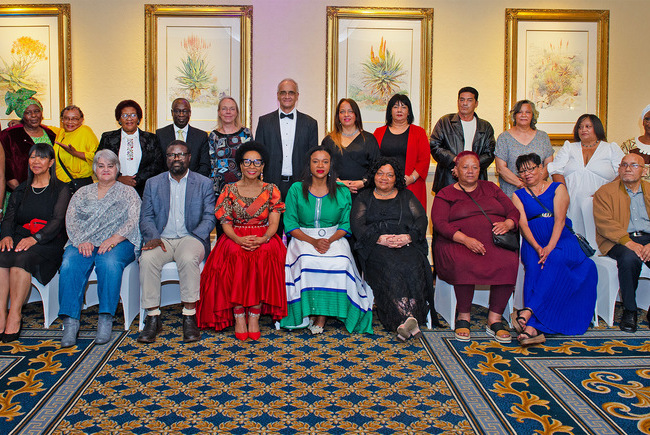
UCT leadership and staff gathered at the Table Bay Hotel on 25 October for a celebration dinner in honour of the 2022 UCT retirees.
30 Dec 2022 - 7 min read Readers’ Choice 2022
UCT is among the top 60 most international universities in the world, according to the 2022 list released by Times Higher Education.
29 Dec 2022 - 3 min read Readers’ Choice 2022
UCT’s Associate Professor Amshuda Sonday’s promotion to the professoriate took effect on 1 January 2022.
29 Dec 2022 - 6 min read Readers’ Choice 2022
Associate Professor Shannon Morreira’s promotion to the professoriate marked a full-circle moment for her academic career at UCT.
28 Dec 2022 - 8 min read Readers’ Choice 2022
Employees owe a duty of care to safeguard their colleagues from COVID-19 harm, wrote UCT’s Pierre de Vos.
28 Dec 2022 - >10 min read Readers’ Choice 2022
UCT researchers excelled among the University of Stanford’s Top 2% Scientists in the World.
23 Dec 2022 - 2 min read Readers’ Choice 2022
UCT Vice-Chancellor Professor Mamokgethi Phakeng wished the matric class of 2022 well as they wrote their final exams.
23 Dec 2022 - 3 min read Readers’ Choice 2022
In April, UCT was ranked the best university on the African continent and 270th worldwide, according to the Center for World University Rankings.
22 Dec 2022 - 2 min read Readers’ Choice 2022
The three-day First-Year Campus Reception programme took place in the Sports Centre on upper campus.
22 Dec 2022 - 1 min read Readers’ Choice 2022
UCT soars 23 places to land at 160th globally in the latest international university rankings published by Times Higher Education.
21 Dec 2022 - 3 min read Readers’ Choice 2022
UCT’s executive said farewell to the SRC at a dinner hosted by VC Professor Mamokgethi Phakeng on 16 November.
21 Dec 2022 - 8 min read Readers’ Choice 2022